Induction Melting Furnace Crucible
Special crucible for induction melting furnace
- Direct manufacturer, wholesale at low prices.
- Designed for 1-30kg gold/silver/copper smelting
- Crucible molds can be customized according to your shape requirements.
Apply Our Best Quotation
SuperbMelt Induction Furnace Crucibles for Sale
An induction melting furnace consists of key components like the induction coil, power supply, cooling system, and the crucible, which holds the metal during melting. The crucible is crucial for ensuring a clean and efficient melting process, especially for precious metals like gold.
Modern crucibles are often made of graphite, a material known for its high thermal conductivity, chemical resistance, and durability. Graphite crucibles ensure faster melting, prevent metal contamination, and reduce metal loss, making them ideal for melting gold and other precious metals.
Before graphite crucibles, materials like clay or ceramic were used, but they were less efficient, prone to cracking, and could lead to contamination of the molten metal. Graphite crucibles have since revolutionized the gold melting process by providing superior performance and reliability.
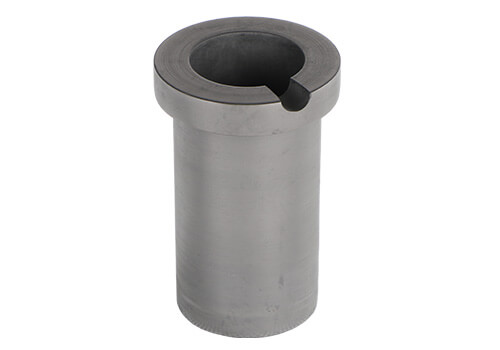
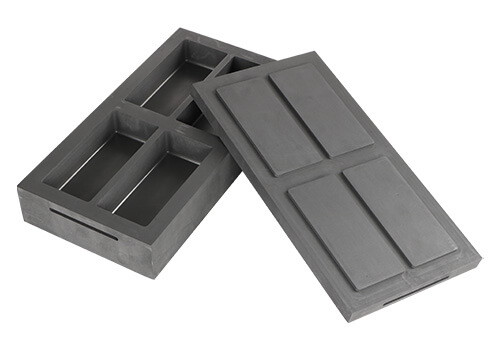
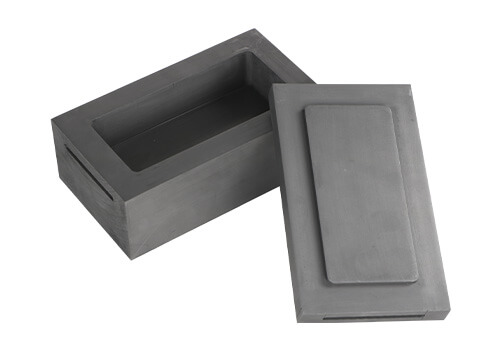
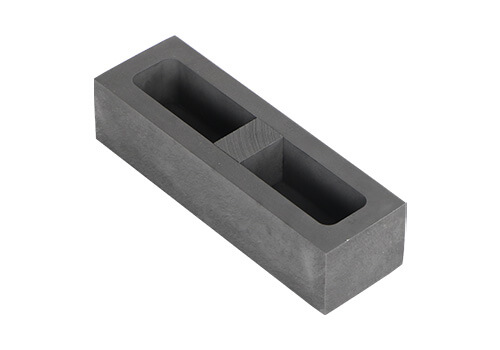
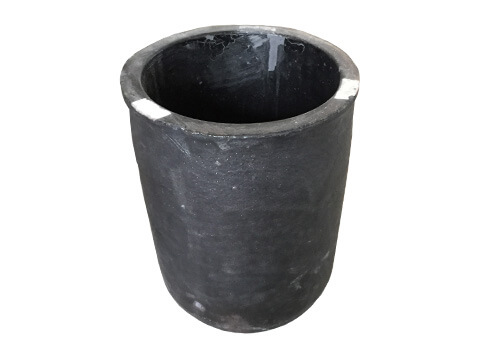
Superbmelt induction melting furnace crucible list
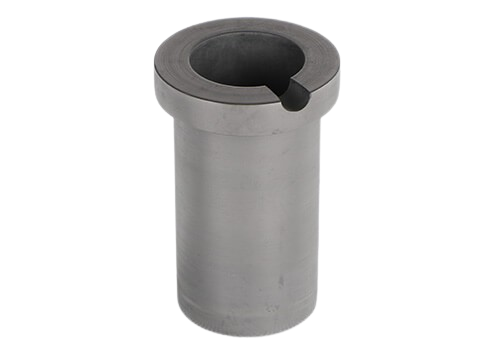
Graphite Crucible
Superbmelt graphite crucible is used for melting and casting of metals and certain alloys. This is the part of the induction furnace that holds molten metal during melting processes. The crucible is made up of graphite which makes it a high quality induction furnace graphite crucible. The high density body of the furnace crucible and its structure makes the furnace crucible a better compression property.
Parameter
- Melting Capacity: 1-30kg
- Application: Pure gold, K gold, gold alloy
Silicon carbide crucible
Silicon carbide crucibles are generally made of carbon bonded silicon and graphite materials. Silicon carbide crucibles are suitable for smelting and melting precious metals, base metals and other metals in an induction furnace. They are used at a temperature reaching 1600 degree celsius.
The silicon carbide crucible offers a uniform and consistent temperature when melting and has a high strength and resistance to cracking. The uniform temperature gives a high quality molten metal needed for casting long lasting and good quality metal products.
Parameter
- Temperature:1600C°
- Application: gold, silver, copper, iron etc.
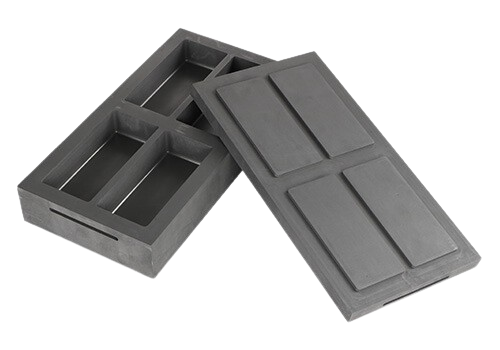
Gold Bar Mold
Superbmelt gold bar molds are made of high quality graphite that are specially made for casting precious metal ingots in a vacuum gold bar casting machine. The gold bar molds come in different sizes and forms. There are four in one bar molds, two in one bar molds and single bar molds that are all accompanied with a lid. The bar molds are suitable for all gold ingot casting capacities; small, medium and large, ranging from 100g to 1kg.
Parameter
- capacity: 100g-1kg
- Application: gold, silver, copper, iron etc.
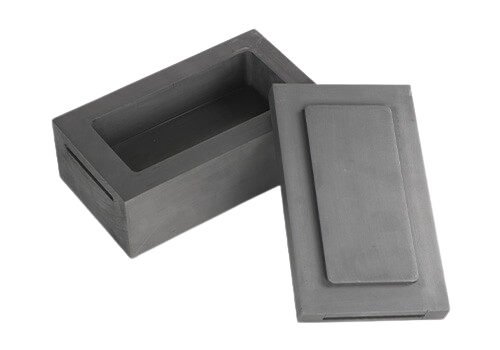
Graphite Mold for Silver
Graphite mold for silver can be used to hold molten silver, gold or any other precious metals into shapes. Graphite mold for silver is made up of 99.9% of silver and ash content that is less than 0.1%. This composition of material ensures that precious metal is not contaminated.
Graphite mold for silver has a wide application; used for holding molten gold, silver or other precious metals. It can be used for testing or ingot casting.
Parameter
- Capacity:100g-3kg
- Application: gold, silver, copper, iron etc.
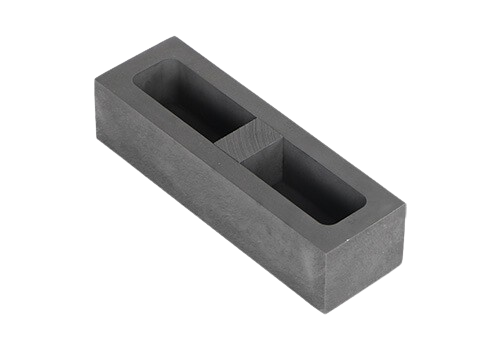
Graphite Ingot Mold
The graphite ingot mold receives liquid metal of precious metals and other types of metals; and conserves them until they are solidified, they are later used as an investment or stored for jewelry use. Graphite ingot molds are made from high density fine grain graphite that comes in various sizes and shapes of square, rectangle and cylindrical. The smooth cavity finish of the graphite gold ingot mold makes the ingot very easy to remove without sticking to the mold itself. The custom ingot gold mold has an excellent thermal conductivity and corrosion resistance.
Parameter
- Capacity: 100g-3kg
- Application: gold, silver, copper, iron etc.
Why You Could Choose Superbmelt

2 years warranty
The warranty for our machine is one year longer than the warranty provided by other factories.

ISO CE SGS approved
Professional certification bodies certify that the machines are of high quality.

Strong service team
We will give response within 24 hours against your problem by our professional engineer.
Why Choose a SuperbMelt Induction Melting Furnace Crucible



Introduction to the Induction Melting Furnace Crucible
Material selection: graphite vs ceramic vs clay
When selecting crucible materials for induction melting furnaces, graphite, ceramic, and clay are three common options, each with its own advantages. Graphite crucibles offer excellent thermal conductivity and high-temperature resistance, suitable for melting precious metals like gold, silver, and platinum in inert or reducing atmospheres, with melting points up to around 3000°C; however, they are prone to oxidation at high temperatures in air, thus requiring controlled environments. Ceramic crucibles provide outstanding chemical stability and oxidation resistance, performing well in high-temperature oxidizing conditions with typical temperature resistance around 1700°C. They are ideal for industrial applications demanding high purity and heat resistance, though their thermal conductivity is lower and cost is relatively higher. Clay crucibles, often graphite-clay composites, are economical and practical, offering moderate heat resistance and thermal shock tolerance, suitable for small-scale metal melting or hobbyist use. However, they have a shorter lifespan and are not recommended for intensive or high-purity industrial melting. Overall, users should choose crucible materials based on their specific application needs, operating environment, and budget to ensure safe and efficient metal melting operations.
1.1, Comparison of thermal conductivity, heat resistance and corrosion resistance of graphite crucibles and traditional ceramic crucibles
Here’s a comparison of graphite crucibles vs traditional ceramic crucibles focusing on thermal conductivity, heat resistance, and corrosion resistance:
| Property | Graphite Crucibles | Traditional Ceramic Crucibles |
|---|---|---|
| Thermal Conductivity | Very high — excellent heat transfer, enabling fast heating and cooling | Low to moderate — slower heat transfer, more uneven heating |
| Heat Resistance | Extremely high — can withstand temperatures up to ~3000°C in inert/reducing atmospheres | High — generally up to ~1700°C, limited by ceramic composition |
| Corrosion Resistance | Good resistance to many non-oxidizing chemicals; susceptible to oxidation in air at high temperature | Excellent resistance to oxidation and chemical corrosion, stable in oxidizing environments |
Summary:
Graphite crucibles excel in thermal conductivity and can endure much higher temperatures but require controlled atmospheres to avoid oxidation. Traditional ceramic crucibles offer better corrosion resistance in oxidizing environments but have lower thermal conductivity and lower maximum temperature tolerance. The choice depends on your melting conditions and metal type.
1.2, Why high-purity graphite is the first choice for gold smelting
ChatGPT 说:
High-purity graphite is the first choice for gold smelting because it combines several critical properties essential for efficient and high-quality melting:
Excellent Thermal Conductivity: It allows rapid and uniform heat transfer, ensuring consistent melting of gold without hot spots or uneven temperatures.
High Temperature Resistance: High-purity graphite can withstand extremely high temperatures (up to around 3000°C in inert or reducing atmospheres), well above gold’s melting point, making it durable for repeated smelting cycles.
Chemical Inertness: It is chemically stable and does not react with molten gold or its alloys, preventing contamination and preserving the purity of the gold.
Low Thermal Expansion: This reduces the risk of cracking under thermal stress, extending crucible lifespan.
Resistance to Thermal Shock: It tolerates rapid temperature changes during melting and cooling, important for operational reliability.
Minimal Contamination: Compared to other materials, high-purity graphite introduces fewer impurities, which is critical for maintaining the quality and value of refined gold.
Together, these properties make high-purity graphite crucibles ideal for smelting gold efficiently while maintaining high purity and minimizing material loss.
1.3, The impact of different materials on metal purity (such as gold, silver, copper)
Different crucible materials can significantly affect the purity of metals like gold, silver, and copper during melting and casting due to their chemical interactions, contamination risks, and thermal properties:
Graphite Crucibles:
Impact on Purity: High-purity graphite crucibles are chemically inert to precious metals and alloys under inert or reducing atmospheres, minimizing contamination risks. However, if oxidation occurs (exposure to air at high temperatures), graphite can degrade and introduce carbon impurities.
Best For: Maintaining high purity of gold, silver, and copper melts when used properly in controlled atmospheres.
Ceramic Crucibles:
Impact on Purity: Ceramics are generally stable but may contain trace impurities (such as alumina, silica) that can leach into the melt, especially at very high temperatures or with reactive metals like copper. This can slightly alter metal composition or cause inclusions.
Best For: Metals that are less reactive or when melting in oxidizing atmospheres; less ideal for ultra-high purity requirements.
Clay or Graphite-Clay Composite Crucibles:
Impact on Purity: These are more porous and prone to chemical interactions, leading to greater risk of contamination. Impurities from the clay matrix can diffuse into the molten metal, reducing purity. They may also degrade faster, increasing contamination over repeated use.
Best For: Non-critical applications where cost is a priority over ultimate purity.
Summary:
To achieve and maintain high metal purity, crucible materials must be chemically compatible with the metal and melting conditions. Graphite crucibles are preferred for precious metals due to low contamination risk, while ceramics and clay-based crucibles may introduce impurities affecting metal quality, especially for highly reactive or precious metals. Proper atmosphere control and crucible maintenance are also key to minimizing contamination.
Temperature tolerance
| Material | Typical Maximum Temperature Tolerance | Notes |
|---|---|---|
| High-Purity Graphite | Up to ~3000°C (in inert or reducing atmospheres) | Excellent for melting precious metals; sensitive to oxidation in air at high temps |
| Traditional Ceramic | Around 1600°C to 1800°C (depends on ceramic type) | Suitable for oxidizing environments; temperature limit varies with composition |
| Clay / Graphite-Clay Composite | Around 1200°C to 1400°C | Economical but lower heat resistance; limited lifespan under high thermal stress |
2.1, Graphite crucibles are usually temperature resistant >1600°C and are suitable for high-temperature rapid melting in induction furnaces
Yes, exactly! Graphite crucibles typically resist temperatures above 1600°C and are well-suited for high-temperature, rapid melting processes in induction furnaces. Their excellent thermal conductivity enables quick heating and cooling cycles, making them ideal for efficiently melting metals like gold, silver, and copper. However, to maintain their integrity and prevent oxidation, they are best used in inert or reducing atmospheres during the melting process.
2.2, How to keep the crucible structure stable and avoid cracks or metal leakage
Proper Preheating:
Gradually heat the crucible before reaching full melting temperature to reduce thermal shock. Sudden temperature changes cause stress and cracking.Use Suitable Atmosphere:
For graphite crucibles, operate in inert or reducing atmospheres to prevent oxidation and structural degradation.Avoid Mechanical Shock:
Handle crucibles carefully; impacts or dropping can cause fractures.Select Quality Crucible Material:
Use high-purity, well-manufactured crucibles with good thermal shock resistance.Maintain Correct Filling Levels:
Don’t overfill the crucible; overflows can cause metal leakage and damage.Regular Inspection and Maintenance:
Check for cracks or wear before use; replace damaged crucibles promptly.Controlled Cooling:
Allow crucibles to cool down gradually after use to avoid thermal stress.
Size and adaptability
ChatGPT 说:
Crucibles come in various sizes and customizable shapes to fit different furnace types and metal volumes, ensuring efficient melting, safe operation, and adaptability to production needs.
3.1, Common crucible volumes: 1kg, 2kg, 5kg, 10kg, 30kg, etc.
ChatGPT 说:
Here is a detailed explanation of common crucible sizes (1kg, 2kg, 5kg, 10kg, 30kg, etc.) along with their typical uses and industries:
1kg Crucible
Use: Suitable for small batch or laboratory-scale metal melting and testing, such as sample preparation and precious metal trial melts.
Industries: Jewelry workshops, small labs, research institutions, and educational training.
Features: Fast heating, flexible operation, ideal for precise control.
2kg Crucible
Use: Suitable for small-scale jewelry processing, small batch precious metal melting, and minor metal recycling.
Industries: Small jewelry studios, craft manufacturers, precious metal recycling centers.
Features: Moderate capacity, balancing efficiency and flexibility.
5kg Crucible
Use: Suitable for medium batch metal melting, commonly used in standard jewelry manufacturing and batch production of gold and silver items.
Industries: Small to medium-sized jewelry factories and gold/silver product manufacturers.
Features: Increased batch size, stable production.
10kg Crucible
Use: Used for large batch metal melting, suitable for larger scale jewelry manufacturing and metal processing plants.
Industries: Large jewelry manufacturers, precious metal processing companies, metal smelting plants.
Features: High capacity, suitable for industrial-scale production.
30kg and Above Crucibles
Use: Suitable for industrial-scale melting, mainly used in large smelting plants, foundries, and precious metal recycling enterprises.
Industries: Large smelting factories, precious metal recycling centers, industrial foundries.
Features: High volume capacity, stable long-duration melting, meeting large production demands.
3.2, How to choose a suitable crucible based on the induction furnace power and furnace size
Match Crucible Capacity to Furnace Power and Volume:
Higher furnace power can melt larger metal volumes; select a crucible size that fits within the furnace coil and heating chamber without overcrowding.
Avoid undersized crucibles that limit batch size or oversized crucibles that the furnace cannot efficiently heat.
Ensure Physical Fit:
The crucible must physically fit inside the furnace’s coil or chamber to ensure even heating and avoid energy loss.
Check the furnace’s maximum crucible diameter and height specifications.
Material Compatibility:
Choose crucible material (graphite, ceramic, clay) suitable for your furnace type and melting atmosphere. For example, graphite crucibles for inert/reducing atmospheres in high-power induction furnaces.
Consider Thermal Load and Melting Time:
The crucible size affects melting speed—larger volumes require more power and longer melting times. Balance your production needs with furnace capability.
Manufacturer Recommendations:
Follow furnace manufacturer guidelines for recommended crucible sizes and types tailored to your specific model and power rating.
Safety Margin:
Leave some clearance between crucible and coil to prevent overheating of the crucible walls and allow proper cooling.
Anti-oxidation coating and life extension treatment
To enhance the durability and performance of graphite crucibles used in high-temperature metal melting, especially in induction furnaces, applying anti-oxidation coatings and life extension treatments is essential. Anti-oxidation coatings, typically made from materials like silicon carbide, alumina, or boron nitride, form a protective barrier on the crucible surface to prevent oxidation when exposed to air at high temperatures. This not only reduces surface degradation and preserves structural integrity but also helps maintain thermal conductivity. In addition, various life extension treatments—such as thermal stabilization through gradual preheating and cooling, vacuum impregnation to fill micro-cracks, and surface sealing to prevent slag buildup—greatly improve the crucible’s resistance to thermal shock and mechanical stress. Proper handling, routine cleaning, and avoiding overuse or sudden temperature changes further contribute to prolonging crucible lifespan. When combined, these measures can extend the working life of crucibles by 1.5 to 2 times, reduce the risk of metal contamination or leakage, and ensure safer, more efficient melting operations across applications like gold, silver, and copper smelting.
4.1, Surface anti-oxidation coating can extend the life of crucible by 30%+
Applying a surface anti-oxidation coating to graphite crucibles is a proven method to significantly extend their operational lifespan—typically by more than 30%, and in some cases even up to 50%, depending on working conditions. At high temperatures, especially above 600°C in an oxidizing atmosphere, graphite naturally begins to oxidize, leading to gradual thinning, surface erosion, and eventually structural failure. An anti-oxidation coating—commonly composed of materials like silicon carbide (SiC), alumina (Al₂O₃), or boron nitride (BN)—forms a dense, protective ceramic layer on the crucible’s surface that resists oxygen penetration and slows down the oxidation process.
This coating not only preserves the structural integrity of the crucible wall under repeated thermal cycling, but also reduces slag adhesion and metal contamination, ensuring cleaner melts. By stabilizing the crucible surface, it allows for more consistent thermal conductivity and better energy efficiency during melting. In high-value applications such as gold, silver, and copper smelting, this translates into improved melt quality, reduced downtime from crucible replacements, and lower overall operating costs. For manufacturers and metalworkers aiming for both high performance and cost-efficiency, investing in crucibles with anti-oxidation coatings is a practical and long-term solution.
4.2, How to judge whether the crucible needs to be replaced (use cycle, cracks, residue deposition)
1. Use Cycle and Service Life
Standard Use Cycles: Most crucibles have a recommended number of heating/melting cycles (e.g., 30–50 melts for graphite crucibles under normal conditions).
Extended Use: If a crucible has exceeded its expected service life, even without visible damage, it may become structurally weakened and should be replaced proactively.
2. Visible Cracks or Deformation
Surface Cracks: Fine hairline cracks can develop due to thermal stress. Small cracks may grow quickly under repeated use and lead to sudden failure or leaks.
Deformation or Warping: Any signs of shape distortion indicate internal stress or material fatigue.
3. Metal Residue and Slag Buildup
Excessive Residue: Thick layers of solidified metal or slag reduce melting efficiency and increase contamination risk.
Difficult to Clean: If residue is baked in or fused to the crucible walls, thermal conductivity decreases, and uneven heating may occur.
4. Oxidation or Surface Erosion
Surface Thinning: In graphite crucibles, oxidized surfaces may flake or appear powdery, indicating material loss.
Coating Failure: Loss of anti-oxidation coating accelerates degradation and signals the need for replacement.
5. Unusual Melting Behavior
Slow Heating or Uneven Melting: Indicates possible heat conduction issues due to internal damage or coating loss.
Metal Leakage: A dangerous sign that the crucible has failed and must be immediately replaced.

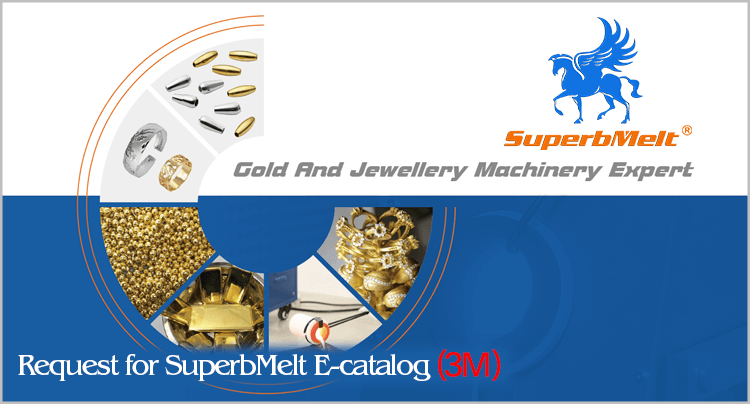
 © Copyright 2008-2021 Superb Electromachinery Co., Limited
© Copyright 2008-2021 Superb Electromachinery Co., Limited